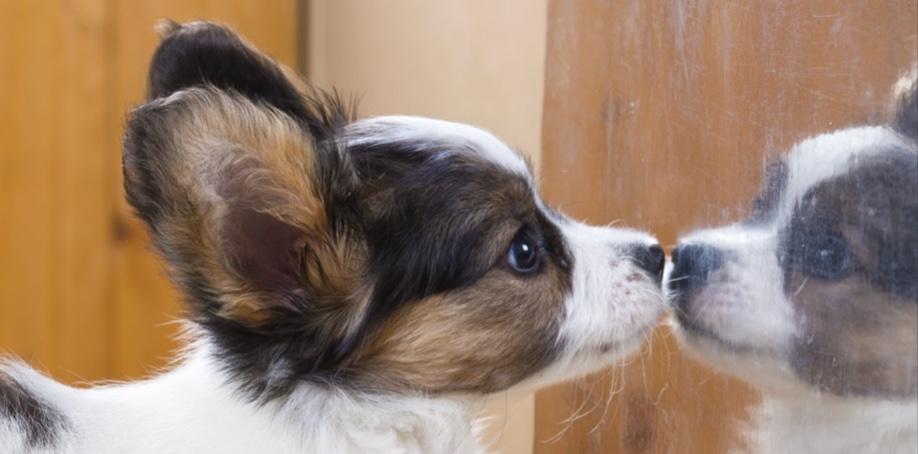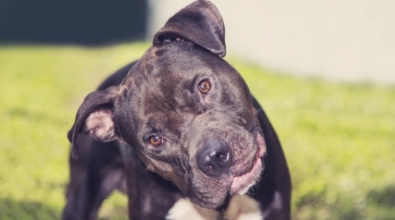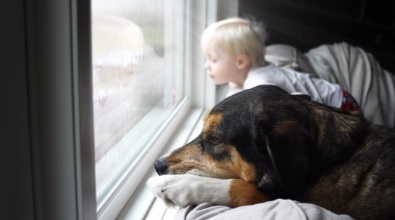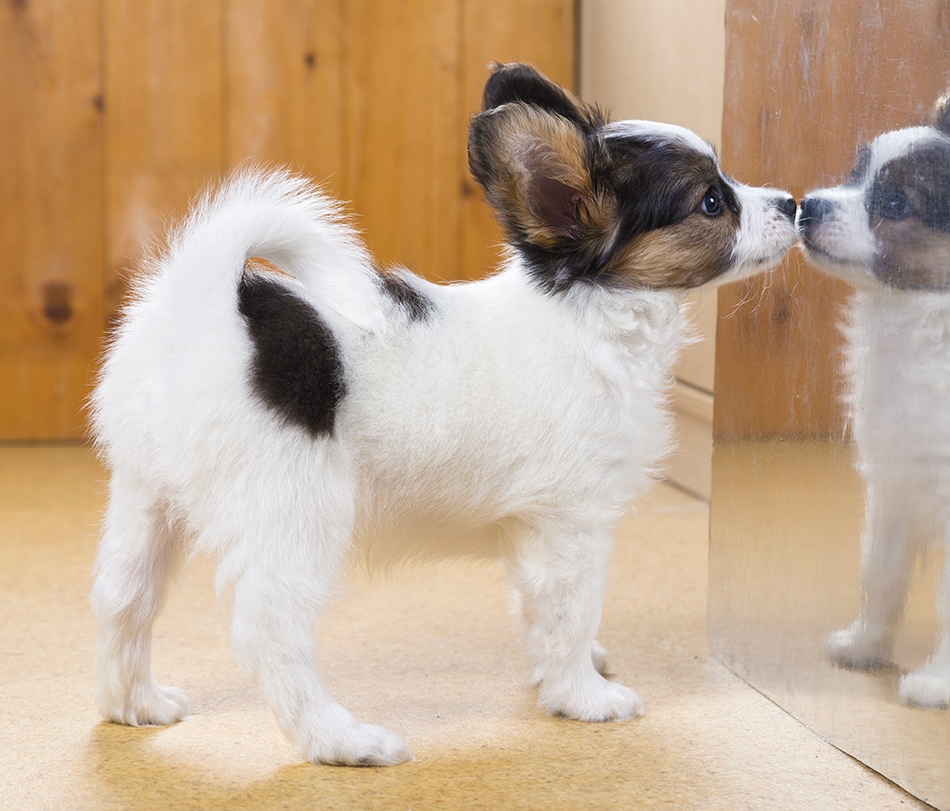
Let’s start off with the short answer: Dogs cannot recognize themselves in a mirror because they lack the ability to speak. Although dogs are conscious beings (they are aware of their surroundings), they cannot speak using language. Since they cannot speak, they cannot develop an internal monologue or thoughts, also known as a self. Since a dog has no self, when they look at a mirror, they recognize that the reflection is of a dog, but they cannot understand that the dog they see is a reflection of themselves.
Explaining the Science
And now the long answer: When humans look in the mirror, we understand that the reflective image is ourselves. We are conscious, meaning that we are fully aware of one’s surroundings. We can also articulate why the reflection is ourselves (for example, we have the same face, birthmarks, hair color, etc.)
Humans, unlike dogs, also have extensive language use. While dogs bark to communicate, humans use complex speech to translate ideas. Humans also contain an internal monologue: these are our thoughts.
Toddlers, younger than age two or three, tend to babble and verbally communicate to seemingly nobody but themselves. As those toddlers develop with age, they learn to transfer those babbles and self-talk into an internal monologue. As you read this, you are most likely reading this page silently, but have a clear voice inside your own head. This process is known as developing a sense of self.
Dogs are conscious beings. They are aware of their surroundings and can respond to external stimuli. However, since dogs lack complex language, we can assume that they do not have an internal monologue. As such, they do not have a sense of self.
Psychologists such as Gordon Gallup Jr. (1970) have developed a test known as the Mirror Test which measures whether an animal is self-aware. In the test, an animal is marked on an area of their body that they cannot normally see. Then, they are placed in front of a mirror. If the animal touches the mark on their body, they are understood to be self-aware because they understand that the mark is on their own body instead of the reflection.
Adult and child humans pass the test, but infants and toddlers tend to fail until they age to approximately 18-24 months. Around this time, their minds have developed enough to reach a sense of self-awareness. Their babbling then progresses into thoughts that they then articulate into more complex ideas.


Psychologists such as Gordon Gallup Jr. (1970) have developed a test known as the Mirror Test which measures whether an animal is self-aware. In the test, an animal is marked on an area of their body that they cannot normally see. Then, they are placed in front of a mirror. If the animal touches the mark on their body, they are understood to be self-aware because they understand that the mark is on their own body instead of the reflection.
Adult and child humans pass the test, but infants and toddlers tend to fail until they age to approximately 18-24 months. Around this time, their minds have developed enough to reach a sense of self-awareness. Their babbling then progresses into thoughts that they then articulate into more complex ideas.





